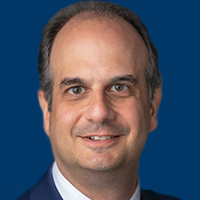Considering Patient-, Treatment-, and Disease-Related Factors in Myeloma
Factors to consider when choosing the optimal treatment approach after the first relapse of multiple myeloma.
EP: 1.Risk of Myeloma Relapse After Frontline Therapy
EP: 2.Newly Approved Regimens for Relapsed/Refractory Multiple Myeloma
EP: 3.Clinical Data for Selinexor Use in Myeloma
EP: 4.Evolving Treatment Options for Relapsed/Refractory Multiple Myeloma
EP: 5.Analysis of the BOSTON Trial
EP: 6.Selecting Appropriate Therapy for Patients With Relapsed/Refractory Multiple Myeloma
EP: 7.Considering Patient-, Treatment-, and Disease-Related Factors in Myeloma
EP: 8.What’s Coming Next in Relapsed/Refractory Multiple Myeloma
James Hoffman, MD: We all confront patients who relapse, and then you have decisions to make in terms of what we’re going to use. I would say the average patient on first relapse has been exposed to some sort of triplet, a PI [proteasome inhibitor], an IMiD [immunomodulatory imide drug], and steroids. Some of them may have gotten a transplant. Many will be on some sort of maintenance. Nowadays some may have even had daratumumab as part of initial therapy. What factors do you consider when you’re looking at your relapse patients? Whether it’s aspects of their disease or aspects of their prior treatment, including whether they got daratumumab early. As you try to decide what to do next and maybe specifically, does mechanism of action play a role on some of those decisions?
Joshua Richter, MD: Absolutely. We always live by the mantra of the 3 determining factors: patient-related factors, treatment-related factors, and disease-related factors. The patient factors: Are they old, young, fit, or frail? Are there comorbidities? Disease-related factors; high risk cytogenetics, extramedullary disease, biochemical or aggressive relapse? The treatment factors: Do they have residual neuropathy from previous therapy? How did they respond or tolerate other therapies? This all gets mangled together, and we look through our own lens of how to interpret it. MOA [mechanism of action] plays a big role, and 1 of the biggest roles to me is the CD38 SLAMF7 conundrum that I wrestle with a little, that drugs like elotuzumab use NK [natural killer] cells to kill myeloma. NK cells express CD38. If you’re coming off a CD38 therapy like isatuximab or daratumumab, you have a reduced complement of NK cells, although they have a little more active profile. There are still fewer of them. I give elotuzumab prior to a CD38 if I can. Apart from that, it’s just thinking about all the factors we talked about. Do any big factors stand out in your mind?
James Hoffman, MD: I agree with that approach. I try to de-stress some of the decision-making with patients. I tell them it’s not this vs that; it’s now vs later. Whatever we decide we’re not going to use now goes into the follow-up group. I agree in terms of the struggles with elotuzumab. You almost have this use-it-or-lose-it thought in which you can try it late, but if it’s going to work, it’s more likely to work before daratumumab, but daratumumab is the more active monoclonal. In a high-risk aggressive relapse, you don’t want to play around with your less-good option. That’s a drug that takes a lot of wrestling. If you choose your best job first, and they’re coming off an IMiD and you want to switch classes, if there are adverse-effect–related reasons like neuropathy, GI [gastroenterology]–related problems with oral drugs, or access issues with medicines like carfilzomib. You did a good job summarizing it, and there’s a little creativity there. There’s no strict algorithm that we can broadcast. But there are no wrong decisions as long as you’re using highly active combinations because the other drugs are there for you should it not work out well.
Joshua Richter, MD: Let me throw out a loaded question. We’ve hinted at the notion of high-risk cytogenetics. But what about biologically high-risk patients who do well with induction? You put them on some type of maintenance with or without a prior transplant, and 6 months later they’re exploding. Do you have any approach? Is it time to bring in new mechanisms of action as opposed to just another generation IMiD or mAb [monoclonal antibody]? Is this a place for selinexor or belantamab?
James Hoffman, MD: That’s a really good question. I talk to my patients a lot about this because we all focus on the FISH [fluorescence in situ hybridization] and the genetics initially, and those are pretty good predictors of aggressivity of disease and time to relapse, etc. But as I sometimes explain to my patients, there’s no better predictor in terms of how things are going to go than how things go. If the disease relapses early or if it relapses aggressively, if there’s a clinical relapse that’s profound, the disease is telling you something. It’s telling you that it’s acting aggressively. Whether you can identify the genetics behind it or not, it’s acting aggressively. Sometimes for high-aggressive disease, high-turnover disease, you might want to incorporate alkylators or chemotherapy drugs that work for cells that are very actively dividing. Certainly, if you get less than ideal benefit from drugs like PIs and IMiDs, then you probably aren’t going to get gangbuster results simply by shifting other PIs and IMiDs. Not that you would never try it. None of these are never rules. But those are patients you may want to incorporate, or I might want to incorporate something different, whether it’s an alkylate or a combination or simply using drugs like selinexor or different mechanisms of action, different approaches. Maybe those are patients I would consider earlier for clinical trials that might be available to patients earlier in the course of their disease. I consider those patients’ high risk. I try to get appropriately aggressive with them to get the best-possible results. How about yourself? How do you deal with the clinically high risk?
Joshua Richter, MD: All the same ways. Early involvement in clinical trials. I say the same exact things to my patients, that people who do good do good, and those are really important statements to live by. I completely agree. If you’re biologically demonstrating that you’re not doing well on an IMiD, just bringing in a next-generation IMiD isn’t the answer. Or if you’re not doing well on a PI, another generation PI is not the answer. Those are the times where moving to drugs like selinexor are further up in the paradigm to give a mechanism of action that the disease is not used to.
One thing that’s interesting is what we’re seeing with the STOMP study. A lot of other ways that we can give the new MOA of the SINE—selective inhibitor of nuclear export, like selinexor—we can give them with other partners. STOMP is showing us combinations with pomalidomide and daratumumab and all the drugs that we already use. For patients who are getting PI, IMiD, or all these combinations up front in the early relapse, if they haven’t seen pomalidomide but they blew through the IMiD PI very quickly, that might be a patient for selinexor-pomalidomide-dexamethasone, which we’ve used in a couple of patients. For what it’s worth, that selinexor-pomalidomide-dexamethasone regimen has been our go-to in patients with leptomeningeal disease. For what it’s worth, we’re seeing more of this extramedullary disease. Both plasma cell leukemia, CNS [central nervous system] and both selinexor and pomalidomide cross the blood-brain barrier. For those 1-off patients who have that horrible issue, that’s where we’ve been approaching them with those selinexor-based combos.
James Hoffman, MD: That’s excellent advice. We don’t have a ton of drugs that have good CNS penetration. We treat systemic disease, and we’re all seeing more of those patients. That’s an excellent point. Selinexor is even being studied in primary brain tumors because of its good CNS penetration. That’s an excellent thing to bring up for a very desperate patient population.
TRANSCRIPT EDITED FOR CLARITY
Latest Conference Coverage

Belumosudil Produces Long-Term Responses Without New Safety Concerns in cGVHD

Prophylactic Itacitinib May Safely Mitigate CRS Following Axi-Cel Administration in Lymphoma

Serial ctDNA Testing Could Improve Risk Stratification in High-Risk MIBC

Adjuvant Nivolumab Provides Sustained DFS Benefit, Favors OS in Muscle-Invasive Urothelial Cancer
2 Commerce Drive
Cranbury, NJ 08512